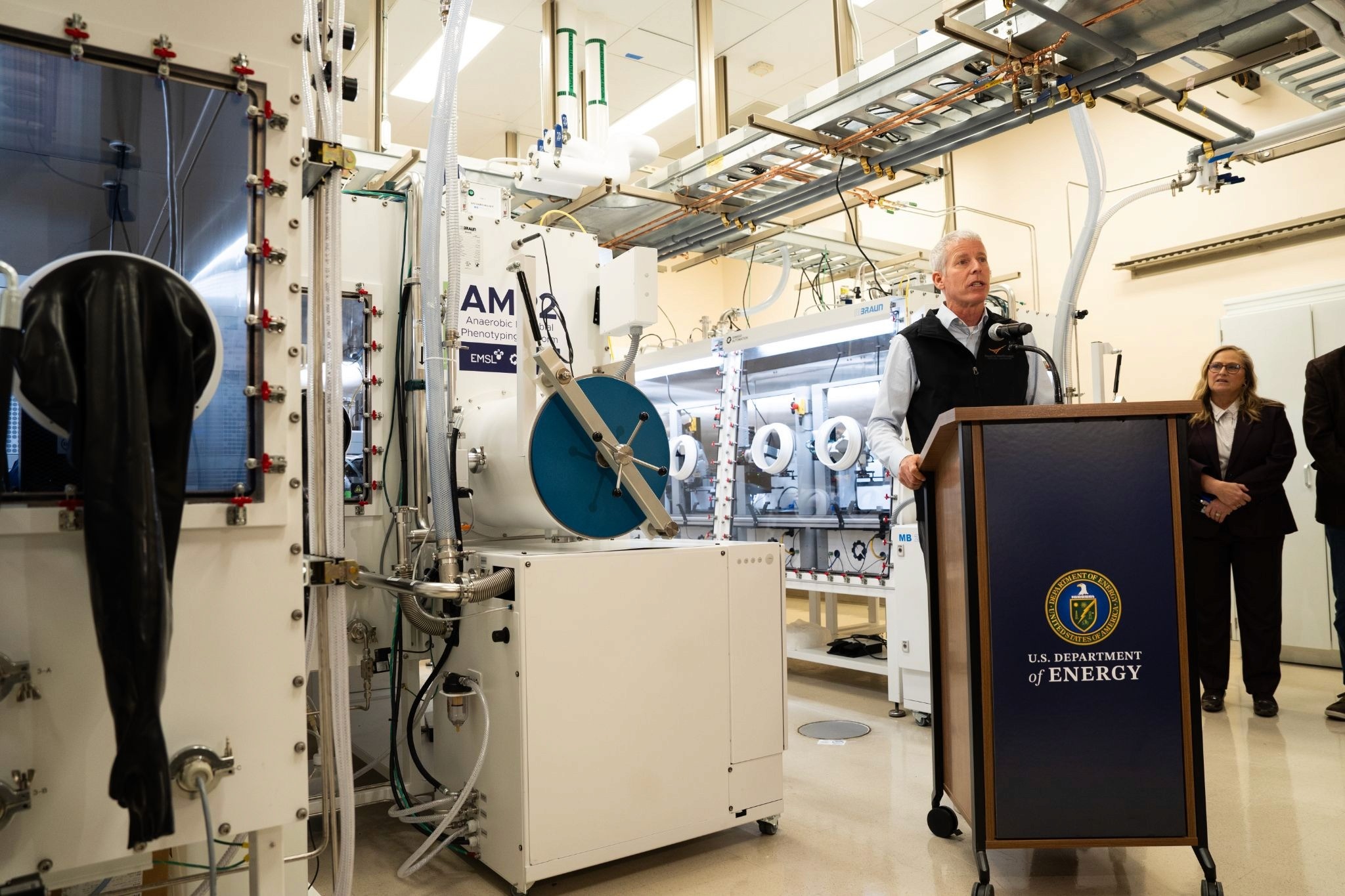Engineered Human Therapies
Phage DNA Sabotage Causes Self-Destruction of Deadly Pathogens
icrobial warfare intensifies as scientists reprogram viruses to infiltrate and defeat antibiotic-resistant bacteria, offering hope in the fight against superbugs
Jan 31, 2024
[Science Photo Library]
Researchers at Northwestern University researchers have achieved a remarkable feat: coaxing a lethal pathogen to self-destruct from within. The team modified the DNA of a bacteriophage, a type of virus that infects and replicates within bacteria, and introduced it into Pseudomonas aeruginosa (P. aeruginosa), a highly antibiotic-resistant and deadly bacterium. The modified DNA, once inside the bacterium, managed to evade the pathogen's defense mechanisms, assembling into virions that effectively sliced through the bacterium's cells, leading to its prompt demise.
Published in Microbiology Spectrum, this experimental work is a pivotal step towards developing designer viruses as novel therapeutics to combat antibiotic-resistant bacteria. The research not only sheds light on the intricate workings of bacteriophages but also contributes valuable insights into a relatively unexplored area of biology.
“Antimicrobial resistance is sometimes referred to as the ‘silent pandemic,’” said Northwestern’s Erica Hartmann, associate professor of civil and environmental engineering at Northwestern’s McCormick School of Engineering. Hartmann, who led the work, is also a member of the Center for Synthetic Biology. “The numbers of infections and deaths from infections are increasing worldwide. It’s a massive problem. Phage therapy has emerged as an untapped alternative to our reliance on using antimicrobials. But, in many ways, phages are microbiology’s ‘final frontier.’ We don’t know much about them. The more we can learn about how phage works, the more likely we can engineer more effective therapeutics. Our project is cutting-edge in that we are learning about phage biology in real time as we engineer them.”

The rise of antibacterial resistance, linked to increased antimicrobial use, poses a significant threat to the global population. According to the Centers for Disease Control and Prevention (CDC), nearly 3 million antimicrobial-resistant infections occur annually in the United States alone, resulting in over 35,000 deaths. Faced with this crisis, researchers are exploring alternatives to antibiotics, with phage therapies gaining attention.
Phage therapies offer a potential solution by selectively targeting bacterial infections without affecting the rest of the body. The specificity of phages makes them an appealing option compared to broad-spectrum antibiotics, which can disrupt the entire microbiome. Hartmann envisions a future where tailored phage therapeutics can be designed with precise traits to treat individual infections, offering a targeted and effective treatment without side effects. “What’s powerful about phage is it can be very specific in the way that antibiotics are not,” Hartmann said. “If you take an antibiotic for a sinus infection, for example, it disrupts your entire gastrointestinal tract. A phage therapy can be designed to affect only the infection.”
While previous research on phage therapies primarily focused on Escherichia coli, Hartmann's team concentrated on P. aeruginosa, a highly dangerous bacterium ranking among the five deadliest human pathogens. A leading cause of hospital infections, particularly in individuals with compromised immune systems or cystic fibrosis, P. aeruginosa is the ideal target for this emerging therapy. “It is one of the highest priority, multi-drug resistant pathogens that many people are really concerned about,” Hartmann said. “It is extremely drug resistant, so there is an urgent need to develop alternative therapeutics for it.”
In their study, researchers used electroporation to introduce phage DNA into P. aeruginosa. This technique uses short, high-voltage pulses of electricity to make temporary holes in the bacterial cell, to allow entry of phage DNA to mimic the infection process. Overcoming the bacterium's antiviral defenses, the modified DNA successfully carried information into the cell, resulting in virions that effectively killed the bacteria. The success of this process opens new possibilities for developing phage therapies tailored to combat antibiotic-resistant pathogens.
Hartmann's team not only observed the phage's ability to kill the bacteria but also witnessed the release of billions of phages from the bacteria, capable of targeting other bacterial infections. This groundbreaking approach provides a glimpse into the potential of mass-producing therapeutic phages for combating bacterial infections.
Supported by the Walder Foundation, the National Science Foundation, and the National Institutes of Health, this study marks a significant stride toward developing innovative strategies in the ongoing battle against antibiotic resistance. As Hartmann continues to optimize phage DNA for potential therapies, this research lays the foundation for a new era in the fight against deadly pathogens.


















